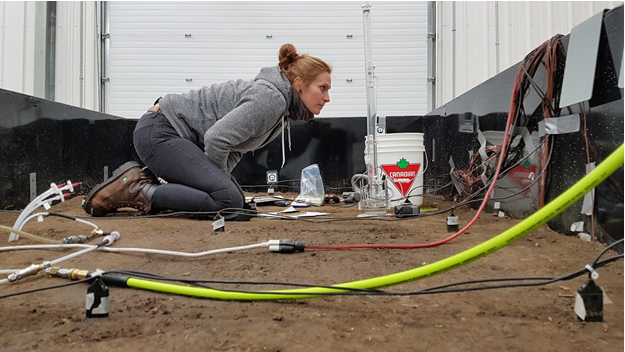Getting the MOST out of mine reclamation
Success Story Info
-
Organization:
University of Saskatchewan
- Region: Saskatchewan
-
Impact:
Mining companies and engineering firms can close and reclaim mines better, protecting the environment and saving money.
-
Project:
Mine Overlay Site Testing (MOST)
- Category: Clean resources, Natural resources
- Story Date: 2019-02-05

Getting the MOST out of mine reclamation
Returning a mine site to its original state is far more complex than covering it over and planting trees. The design and materials that go into the cover system must ensure that mine wastes are properly sealed off.
Rain and snowmelt could seep in and carry pollutants into groundwater. Mine owners have to test:
- plant roots
- animal burrows
- freeze-thaw cycles
- stability of the covering slope
Regulators also want to know that the cover design will last for years to come.
In 2015, the University of Saskatchewan's Global Institute for Water Security received $1.8 million from WD through the Western Diversification Program to establish the Mine Overlay Site Testing (MOST) facility in Saskatoon.
MOST measures how water moves through a cover design and how that flow changes over time. The facility builds scale models of cover designs in 4-metre by 2-metre trailers. Sprinklers simulate rainfall and snow melt. Tilting the trailer simulates hill slopes. The contents of the trailers can be repeatedly frozen and thawed, speeding up the passage of the seasons. Instruments trace water flow through the layers of covering materials.
The one-of-a-kind facility makes it possible for researchers working with resource companies to test the designs of covers for closed mines. MOST works in the gap between small-scale lab experiments and complex, large-scale test sites.
According to the Global Institute for Water Security, MOST experiments more accurately predict how a cover system will work compared to conventional lab tests. And MOST does it in a fraction of the time and cost of outdoor experiments in large, outdoor test plots.
Client mining companies and engineering firms use the results of MOST's research to close and reclaim mines. They protect the environment better and potentially save millions of dollars.
Photo credit: MOST Facility - Global Institute for Water Security, University of Saskatchewan
- Date modified: